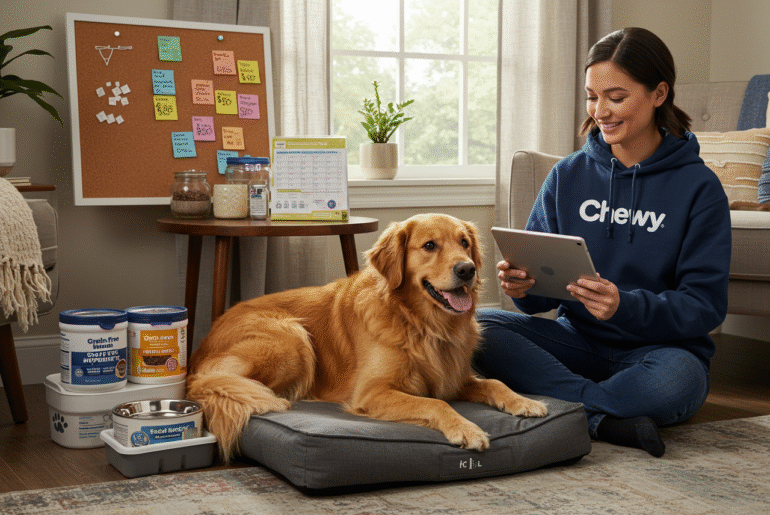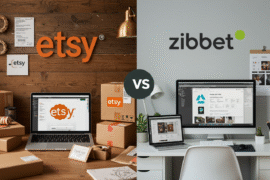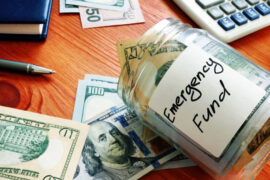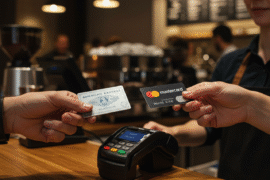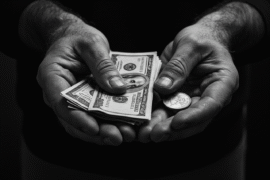This article may contain references to products or services from one or more of our advertisers or partners. We may receive compensation when you click on links to those products or services. Nonetheless, our opinions are our own.
- Key Highlights
- Introduction
- Budget and Care Planning for Large Breeds
- Costs of Big Dog Ownership
- Feeding Your Large Breed the Right Way
- Vet Visits and Ongoing Health Care
- Training and Socialization Tips
- Exercise Needs for Active Large Dogs
- Grooming and Upkeep for Larger Breeds
- FAQs
- Top Takeaways
- Recommended Reads
Key Highlights
- Having a big dog can feel very rewarding, but you need to be ready.
- Larger breeds have different needs and costs compared to smaller dogs.
- It’s vital to understand their food requirements, how much exercise they need, and any health issues they might face.
- Good training and socializing are key to making sure your dog is happy and well-adjusted.
- With love and commitment, you can offer a great life to your big furry friend.
Introduction
Getting a large dog can be a great choice. These gentle giants often have loving and loyal personalities that charm many people. However, bringing one of the largest dog breeds into your home requires understanding the commitment involved. Caring for a big dog demands careful planning. You need to consider your budget and how to meet their specific care needs.
Budget and Care Planning for Large Breeds
Owning a big dog can be wonderful, but it comes with its own responsibilities. Larger dog breeds have needs that are different from smaller ones. These needs can impact your budget and daily routine. It’s important to consider the costs from the beginning and ensure you provide the right food and enough exercise.
This section will help you plan how to budget for your big furry friend. It covers the costs of owning a large dog and the right food, healthcare, training, and grooming they need.
Costs of Big Dog Ownership
When you want to get a large dog breed, it’s important to think about the initial costs. Adoption fees, trips to the vet, vaccinations, leashes, collars, and beds can add up quickly. It’s also important to know that large breeds usually require tougher, stronger supplies, which tend to be more expensive.
You should also consider the ongoing costs. Feeding a large dog can be expensive, especially since they tend to live longer. Additionally, some large breeds are prone to health issues, such as hip dysplasia, which can result in higher vet bills.
It’s important to prepare for unexpected costs as well. Emergency vet visits or special treatments can be costly. Getting pet insurance or setting up an emergency fund for your dog is a good idea.
Feeding Your Large Breed the Right Way
Nutrition plays a big role in your large dog’s health. Choosing the right food helps with their growth, overall health, and well-being. Large breeds, like German Shepherds and Great Danes, have different nutritional needs than smaller dogs.
Choose high-quality dog food designed for large breeds. Opt for food that supports joint health, as large dogs are more prone to joint problems.
Here are some tips when selecting food for your big dog:
- Breed Size and Activity Level: German Shepherds require a different level of energy than Great Danes.
- Age: Puppies, adult dogs, and senior dogs all have different nutritional needs.
- Health Conditions: Large breeds, like German Shepherds, are prone to hip dysplasia and might require specialized food.
Always consult your vet about the best food for your large dog. They can guide you in choosing the right food based on your dog’s specific needs.
Vet Visits and Ongoing Health Care
Proactive healthcare is important for the health of your large-breed dog. It’s important to take your dog to the vet regularly, starting when they are puppies. These visits help spot health issues early, ensure vaccinations are up to date, and provide preventive care when necessary.
Large dog breeds generally have shorter lifespans than smaller breeds, which is why it’s important to monitor their health closely. Your vet can check their growth, look for breed-specific health issues, and offer advice tailored to your dog’s needs.
- Maintain a healthy weight: A balanced diet and regular exercise help reduce the risk of joint problems.
- Monitor joint health: This is especially crucial for larger dog breeds.
- Preventative care is important: Always stick to your vet appointments to keep your dog healthy.
Early socialization is important for large dog breeds. Their size can make them appear intimidating to others. It’s helpful for them to experience new environments, people, and other dogs while they are still young. Training with positive reinforcement is the most effective approach.
- Start with basic commands such as “sit,” “stay,” “come,” and “leave it.”
- Be consistent and patient during training.
- Consider joining a puppy training class to build a solid foundation for good behavior.
A well-trained large dog can bring joy to you and others. With early socialization and training, they can be friendly and well-behaved members of the community.
Exercise Needs for Active Large Dogs
Big dogs need plenty of exercise to stay healthy and happy. A simple walk around the block won’t be enough for these energetic dogs. They need enough space to run and play, either in your backyard or at a local dog park.
Failure to provide enough exercise can lead to boredom, which may result in destructive behavior. Daily walks, playtime, and even swimming (if your dog enjoys it) are great ways to keep them active and alert. Aim for at least one hour of exercise each day.
A tired dog is a well-behaved dog, especially for large breeds. Ensuring they get enough exercise helps them stay physically and mentally healthy.
Grooming and Upkeep for Larger Breeds
Large dogs, like smaller breeds, require regular grooming to stay healthy and happy. However, grooming a large dog can be more time-consuming because they are bigger and often have thick, double coats. You should be prepared to spend extra time keeping your furry friend looking and feeling their best.
Follow a regular grooming routine that includes brushing their thick double coat, trimming their nails, and cleaning their ears. These tasks prevent mats and skin issues while also keeping your home cleaner.
Brushing and Bathing Tips
Grooming your large dog is not just about appearance—it’s important for their health and happiness. Regular brushing helps remove loose fur, prevent mats, and distribute natural oils for a healthier coat.
Here are some grooming tips:
- Use the right tools for large dogs, such as a strong brush for thick coats and a de-shedding tool if your dog sheds a lot.
- Nail clippers and dog-specific shampoo and conditioner are essential. Avoid using human products, as they can damage your dog’s skin.
If grooming your large dog feels overwhelming, consider hiring a professional groomer. They are trained to handle thick coats and can manage dogs that may be restless during grooming.
Managing Shedding and Skin Health
Shedding is normal for dogs, but large breeds tend to shed more, especially those with thick double coats. Regular brushing helps reduce the amount of hair in your home. During shedding season, you may need to brush your dog daily to remove loose fur.
Caring for your dog’s skin is also important. Many dogs experience dry skin, so using dog-specific shampoos and conditioners can help maintain their skin health. Adding fish oil to their food may also improve the condition of their skin and coat.
Check your dog’s skin regularly for signs of irritation, redness, or dryness. If you notice any abnormalities, schedule a visit to your vet to rule out any underlying skin issues.
FAQs
What are the initial costs of owning a big dog?
Initial costs include adoption fees, vet visits, food, bowls, collars, leashes, and a comfortable bed. Larger breeds will likely have higher costs for these essentials compared to smaller dogs.
How often should large breeds be taken to the vet?
Large breeds should visit the vet regularly. At least once a year is recommended, starting from puppyhood, for vaccinations and preventive care.
Can large dogs live comfortably in small spaces?
Yes, as long as they receive enough exercise. Regular walks and playtime are important, regardless of the size of the home.
What are the best training methods for large dog breeds?
Positive reinforcement works best. Early socialization and consistency in commands help promote good behavior.
Top Takeaways
- Large dogs need more food, space, and care than smaller breeds.
- Budgeting ahead for health, food, and grooming is important.
- Exercise and training are vital for well-being and behavior.
- Regular grooming keeps large dogs healthy and clean.
- Vet visits, good nutrition, and early training make a big difference.

Reviewed and edited by Albert Fang.
See a typo or want to suggest an edit/revision to the content? Use the comment form below for feedback.
At FangWallet, we value editorial integrity and open collaboration in curating quality content for readers to enjoy. Much appreciated for the assist.
Did you like our article and find it insightful? We encourage sharing the article link with family and friends to benefit as well - better yet, sharing on social media. Thank you for the support! 🍉
Article Title: Big Dog Ownership 101: Budgeting and Care Tips You Need
https://fangwallet.com/2025/06/19/big-dog-ownership/The FangWallet Promise
FangWallet is an editorially independent resource - founded on breaking down challenging financial concepts for anyone to understand since 2014. While we adhere to editorial integrity, note that this post may contain references to products from our partners.
The FangWallet promise is always to have your best interest in mind and be transparent and honest about the financial picture.
Become an Insider

Subscribe to get a free daily budget planner printable to help get your money on track!
Make passive money the right way. No spam.
Editorial Disclaimer: The editorial content on this page is not provided by any of the companies mentioned. The opinions expressed here are the author's alone.
The content of this website is for informational purposes only and does not represent investment advice, or an offer or solicitation to buy or sell any security, investment, or product. Investors are encouraged to do their own due diligence, and, if necessary, consult professional advising before making any investment decisions. Investing involves a high degree of risk, and financial losses may occur including the potential loss of principal.
Source Citation References:
+ Inspo
There are no additional citations or references to note for this article at this time.
